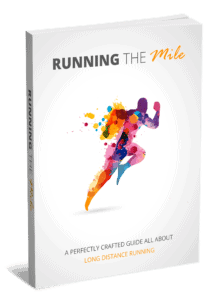
5k Run Tips – UPDATED 2021 – Tips And Tricks For The Beginner Runner
Page Contents
There are so many 5k run tips promising to get you ready to run your fastest 5K that who knows where to start.
Some plans call for you to run 3 days a week while others want you to hit the pavement 5 days a week.
– How many miles should I run?
– How fast should I run?
– What kind of strength training should I do?
– How long should it take to run a 5K?
– Should I work on my speed or endurance?
These are just a few of the questions that you may be asking yourself.
When it comes down to it, there is no perfect plan to get you ready for the big race. We all have different body types, goals, and abilities.
Below I have listed some 5K run tips. These 5K run tips will help you customize the running training plan that is right for you and your specific goals.
Starting A 5k – Getting To The Start Line
The first thing that we need to do is figure out if this is your first time running a 5K. Because you might be happy by just making it across the finish line. Or maybe you are an experienced runner hoping for your personal best. Either way, it is important to figure out what you want before you can come up with a training plan on how to get there.
3.1 miles might take you over an hour if you plan on walking most of the way, or you might be trying to get under 20 minutes for the first time. It doesn’t matter if you are a beginner, intermediate, or advance, just make sure the goal is realistic and challenging for you.
The amount of time that you have to train will play a big role in setting a reasonable goal. Try not to increase your weekly mileage by more than 10% to help prevent injury.
Start with your current fitness level and the amount of time that you have to train to come up with a feasible time goal for yourself.
Equipment Needed For 5k Running
Luckily there is not much as far as equipment that you are going to need to get started. Although running is very easy on your pocketbook, there are a few items that I suggest you get to help make training as safe and fun as possible.
Let us start with the essentials. The first thing that you are going to need is a good pair of running shoes. Make sure that they are supportive and comfortable. You may need custom orthotics if you have high arches or flat feet but usually, a good supportive pair of running shoes will be sufficient. Try to replace your shoes every four to five hundred miles of running.
Other essential gear that you are going to need is the proper clothes to run in. Proper clothes are needed to prevent chafing. If you have ever taken a run wearing all cotton then you have probably learned this lesson the hard way.
Chafing happens when your skin is rubbed raw due to the repetitive motion of running. This could be friction between skin to skin, or from skin to clothing. Cotton absorbs sweat and stays wet so make sure that you stick to synthetic clothing that will remain smooth and dry when you are out on a hot run. Also, make sure that your clothes are not to tight and not too baggy, a proper fit will help prevent chafing.
Core And Recovery – Foam Rolling Can Benefit You
Invest in a good foam roller. They are a pretty inexpensive way of giving yourself a deep tissue massage. Foam rollers can help prevent repetitive stress injuries associated with running. Using a foam roller will help release tightness and muscular tension and will speed up recovery. As a runner, I will use a foam roller on my quads, glutes, achilles, and hamstrings almost every day.
That is pretty much all the essential gear that you are going to need before you hit the streets but there are still some items that you may want to help make your training easier and a bit more fun. I started with a good pair of earphones so I can listen to my favorite tunes while training. A good runners belt is also great to have. They can carry your ID, Phone, keys, and other essentials while running. A smartwatch with GPS, stopwatch, and a heart rate monitor can also be a helpful training tool. A headband or wristband can also be helpful if you tend to sweat a lot.
Work On Your Core Strength
Strong legs and core are important in every aspect of running so don’t forget to add strength training to your workout program. Not only does strength training increase your speed and endurance, but it is also very important when it comes to building up resistance to injury.
Don’t worry if you don’t have access to a gym to lift weights, you will be able to strengthen your core and legs doing simple exercises that don’t require any equipment. Running up steep hills, jumping rope and doing squats are great ways to keep your legs strong. Doing planks, leg lifts, and lunges are great exercises to build a solid core. The hard part is having the discipline to get off of the couch and do the work.
How Much Mileage Should I Run for a 5k Race?
In order to meet or exceed your goal without injury, it is important to listen to your body. You are going to need to figure out how many days a week your body can handle running. This is going to depend on your fitness level.
At a minimum, you should plan on running 3 days a week for effective training. Unless you are a professional, you should plan on taking at least one day off. Most of us will feel comfortable running 4-5 days a week for maximum benefit.
It is best to work your way up to running 3.1 miles slowly but you have to start somewhere. For the beginner runner, I would recommend starting with 1.5 miles for your long run. You don’t have to run the whole distance, run some and walk some, just try to complete the distance. Try to increase your distance by 10% every week. So if you start off running 1.5 miles the first week, you should try to increase to 1.65 miles on your second week. Keep increasing until your long run is between 4-5 miles.
Training For 5k – Guide To Getting Faster
Running a 5K requires both speed and endurance. Try running some runs shorter and faster, and other runs longer and slower. This will help to improve your stamina and speed.
You should also work high-intensity interval training into your training plan. This is when you combine strenuous running with brief rest. There are lots of ways to do this so I will give you an example that you can customize into your training plan.
TIPS
– Always make sure to warm up with a 5-10 minute walk followed by a 5-10 minute easy jog.
– Run hard and fast for about 100 yards. You should be breathing hard and feeling the burn in your legs.
– Slow down and walk for the next minute to recover.
– Start with 4 reps for a beginner. Increase by 1 every week until you reach 10.
– Cool down with a 5-10 minute easy jog followed by a 5-10 minute walk.
The body needs some time off from strenuous workouts to repair, rest, and refuel. There are 3 different types of days that you should incorporate into your workout.
Intense workout days are your hard workouts. These might include your long runs and your high-intensity interval training. Tiny tears will form in your muscles, your muscles will grow bigger and stronger as these tears heal.
Light workout days are when you are still working out, just not as hard. If all of your workouts are too intense then you are likely to see diminishing returns. Working out with less intensity will help prevent overuse injuries while still building strength and endurance.
Depending on your fitness level, you should have 1-2 light workout days a week. Rest days are when you take it easy from your normal workout. Rest days will give your muscles a chance to grow and heal. This doesn’t mean sitting on the couch all day, try to stay active, just try to make sure that your activities are low impact. Try going for a walk, swim, or even an easy bike ride. Fitting 1 or 2 rest days a week into your training program will help you have greater gains with a lower risk of injury.
High-intensity interval training is a great way to increase both your speed and endurance. There are lots of ways to incorporate other exercises like squats, lunges, or even planks into your workout. Just remember to try to keep your workout between 20-30 minutes and don’t do this workout on consecutive days. I would suggest 1-2 days a week for a 5K training program.
Running a 5K race can be a lot of fun and very rewarding. You now have all of the tools that you need to customize a training program that is right for you. Remember that any training plan can be changed at any time. Always listen to your body and have a great race.


Download Running the Mile for only 8usd
“A Know-all Short Report All About Long Distance Running”



